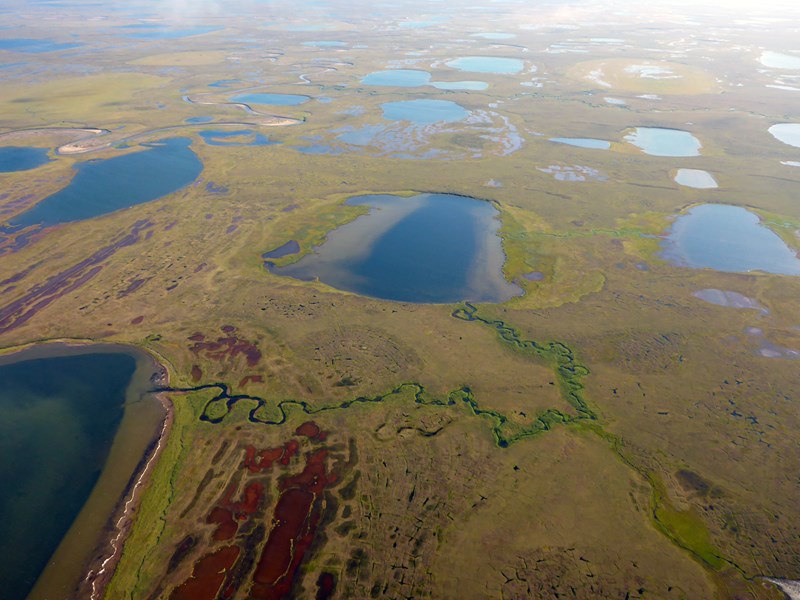Triple C - Permafrost Region Drained Lake Basins
Understanding causes and consequences of catastrophic permafrost region lake drainage in an evolving arctic system
Understanding causes and consequences of catastrophic permafrost region lake drainage in an evolving arctic system
Lakes are abundant features on coastal plains of the Arctic, providing important fish and wildlife habitat and water supply for villages and industry, but also interact with frozen ground (permafrost) and the carbon it stores. Most of these lakes are termed “thermokarst” because they form in ice-rich permafrost and gradually expand over time. The dynamic nature of thermokarst lakes also makes them prone to catastrophic drainage and abrupt conversion to wetlands, called drained thermokarst lake basins (DTLBs).

Together, thermokarst lakes and DTLBs cover up to 80% of arctic lowland regions, making understanding their response to ongoing climate change essential for coastal plain environmental assessment. Catastrophic lake drainage and subsequent ecosystem succession in DTLBs has long intrigued scientists concerned with permafrost, vegetation, and carbon storage. Less attention however has been devoted toward predicting where and when lakes will drain and the magnitude and impacts of downstream flooding. A related process, snow-dam outburst floods from existing DTLBs, has also been overlooked so far in arctic hydrology. Floods generated from snow-dam outburst may help explain abnormally large flood peaks in many arctic rivers and will be increasingly important to consider for future petroleum development and the need to expand roads and pipeline through coastal plain terrain. This research takes a fresh look at lake drainage causes and consequences and feedbacks between DTLB shrub succession and enhanced snowfall and warmer temperatures in arctic Alaska, which are predicted to cause more catastrophic lake drainages and snow-dam outburst floods from abundant lake basins.

The impact of hydrologic hazards is notable along Alaska's Dalton Highway, where extensive snowmelt flooding recently interrupted operations and damaged infrastructure, underscoring the need for system-scale hydrologic studies. This research on catastrophic lake drainage is relevant to improving our understanding of permafrost and hydrological processes; identifying flood and ground stability hazards; and predicting future vegetation, terrestrial and aquatic habitat, and carbon storage dynamics. A combination of remote sensing, field observations, and a lake-drainage experiment are targeted at understanding the causes and consequences of DTLB formation and their broader feedbacks with other arctic system components. Data collected in this study will feed into future model development to enhance predictive capacity of hydrologic hazards and landscape responses to climate change in the Arctic. Space-for-time comparison of DTLB chronosequences provides the conceptual framework for linking process scales. The new conceptual model emerging from this project is important for a number of stakeholders and native villages, where water access, habitat mitigation, and hazard avoidance are a priority. The understanding of hazards and environmental processes gained from this research will advance the interests of industry, land managers, and subsistence users on the Arctic Coastal Plain of northern Alaska.

Funding: NSF Office of Polar Programs Arctic Systems Science (#1806213)